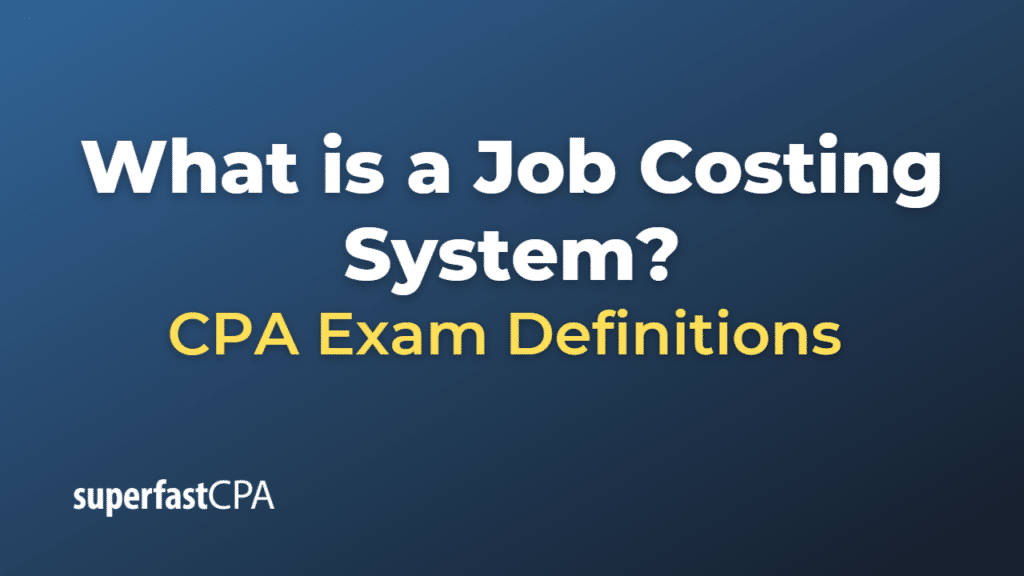Job Costing System
A job costing system is an accounting method that records and tracks costs by individual jobs. It is used in industries where each job, project, or batch is unique and needs to be tracked separately. Each job is treated as a separate cost object, and costs are accumulated for each job separately.
In a job costing system, costs are typically divided into three main categories:
- Direct Materials: These are the materials directly used in the production of goods or the delivery of a service. In a manufacturing company, these would be raw materials. In a service company, these could be any materials used to deliver the service to the client.
- Direct Labor: This includes the wages of employees who work directly on the job. This could include production workers in a manufacturing company, or consultants in a consulting firm.
- Overhead costs: Overhead costs are all the other costs that are incurred in the production process but can’t be directly traced to a specific job. These could include things like rent, utilities, and depreciation.
Companies that use a job costing system will keep a separate job cost sheet for each job. This will record all the direct materials, direct labor, and overhead costs for that job. The total cost of the job is calculated by adding up these three types of costs.
Job costing systems are particularly beneficial in industries where work is undertaken based on specific customer orders and where each job is distinct, such as construction, consulting, advertising, public accounting, movie production, and custom equipment manufacturing, among others.
This system allows companies to precisely track the costs associated with each job, making it easier to control costs, price jobs accurately, and measure profitability on a job-by-job basis. It also facilitates cost estimation for future jobs and assists in decision-making and performance evaluation.
Example of a Job Costing System
Let’s consider a custom furniture manufacturer, who makes unique pieces of furniture as per individual customer orders. Let’s call this company “Custom Creations.”
When a customer orders a custom-made table, this becomes a unique job within the company’s job costing system. Let’s call this Job A.
- Direct Materials: Custom Creations first calculates the cost of the wood, screws, glue, varnish, and other materials directly involved in creating the table. Let’s say these materials total $500.
- Direct Labor: The company then determines the direct labor cost. If a carpenter spends 20 hours making the table and the carpenter is paid $25 an hour, the direct labor cost is $500.
- Overhead Costs: Overhead costs, such as factory rent, utilities, and indirect labor, are also calculated. These costs cannot be directly attributed to a specific job, so they’re often allocated based on a predetermined rate – for example, a percentage of direct labor costs. If Custom Creations uses an overhead rate of 50% of direct labor costs, the overhead for Job A would be $250.
Each of these costs is recorded on a job cost sheet for Job A. The total cost of Job A is the sum of these costs:
- Direct materials: $500
- Direct labor: $500
- Overhead: $250
- Total cost of Job A: $1,250
This information is then used to price the table and assess the profitability of Job A. Additionally, the cost data from Job A can be used to estimate costs for similar jobs in the future.
This process would be repeated for every unique job that Custom Creations undertakes. Over time, this job costing system allows the company to accurately track and control costs, make informed pricing decisions, and measure the profitability of individual jobs.













